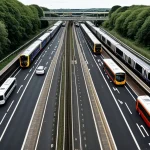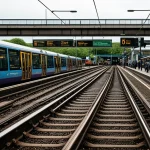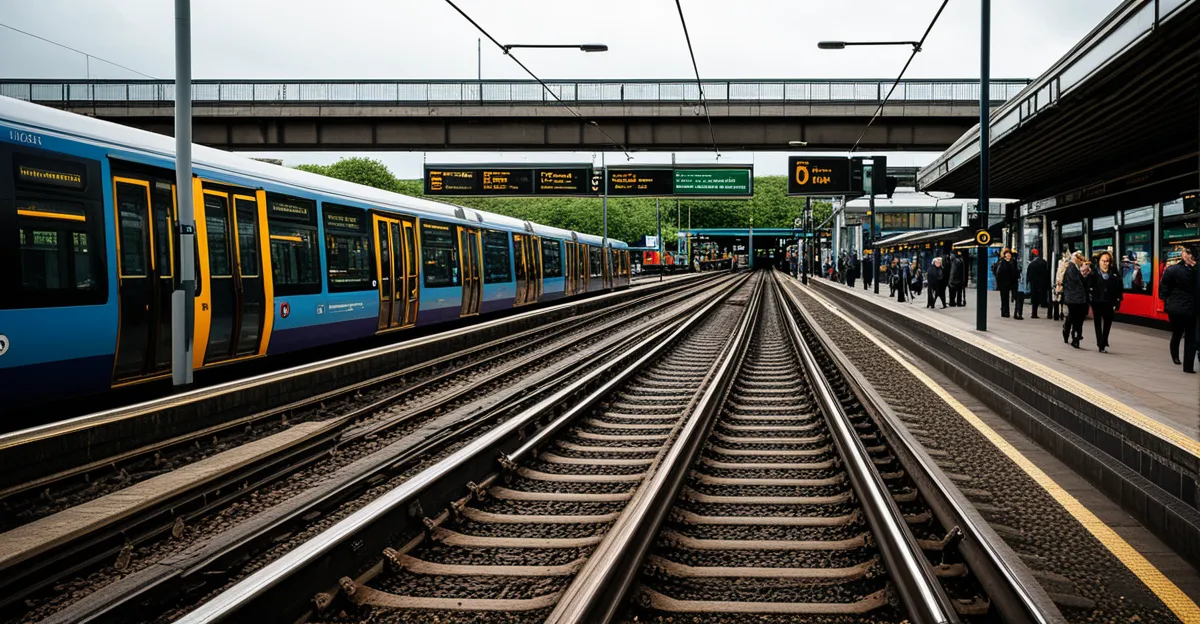Overview of Current Public Transport Systems in the UK
The UK public transport landscape is primarily composed of railways, bus services, and urban transit networks like the London Underground. The rail network is extensive, covering not only major cities but also connecting rural areas, while bus services offer flexible routes and are often the main mode of transport outside metropolitan zones. The London Underground remains one of the world’s busiest and most complex urban transit systems, serving millions daily.
The current state of these systems reflects both their critical role and the challenges faced. Railways and buses are heavily utilized, underlining the importance of public transport in UK daily life—for commuting, education, and leisure. However, many areas suffer from overcrowding and aging infrastructure, especially during peak hours. Despite this, public transport remains vital in reducing road congestion and emissions, supporting economic activity across the country. The integration between different modes varies regionally, influencing ease of travel and user experience. Overall, the existing network forms a backbone for mobility, but continuous improvements are essential to meet growing demand and shifting travel patterns.
In the same genre : How Are Cultural Shifts Influencing UK Media Consumption?
Recent Investments, Upgrades, and Ongoing Issues
Recent infrastructure investment in UK public transport has focused on modernizing the rail network and bus services to improve reliability and capacity. Major projects include enhancements to signaling systems and the introduction of new rolling stock on busy routes. Upgrades to the London Underground aim to increase train frequency and reduce delays, directly addressing long-standing congestion problems.
Despite these efforts, persistent transport issues remain. Delays and cancellations continue to affect daily commuters, often linked to aging infrastructure and staff shortages. Additionally, strike actions by transport workers have occasionally disrupted services, highlighting workplace relations as a critical factor in public transport reliability.
Additional reading : How is the UK transport system evolving to meet future demands?
Ongoing modernization also involves maintenance programs to extend the lifespan of existing assets while integrating newer technologies. For example, digital ticketing systems and real-time travel information are being deployed to enhance user experience. However, balancing urgent repairs with long-term improvements presents a challenge for operators and government agencies alike.
Overall, although service upgrades have delivered improvements, addressing the root causes of delays and cancellations requires sustained investment and strategic planning. This ongoing challenge underscores the complexity of maintaining the UK’s extensive transport infrastructure under rising demand pressures.
Affordability and Accessibility Across the UK
Ticket prices remain a central concern influencing public transport affordability throughout the UK. While urban areas like London benefit from subsidized fares and schemes such as the Oyster card, many regions, especially rural areas, face higher relative costs for bus services and rail travel. These regional disparities contribute to unequal access, affecting daily commuters and vulnerable populations disproportionately.
Accessibility is another critical aspect. Efforts have been made to improve facilities for passengers with reduced mobility. For instance, modern trains and buses increasingly incorporate features such as low-floor entrances, designated seating, and audio announcements. Nonetheless, many older parts of the rail network and London Underground still present challenges, with limited step-free access at certain stations. This can restrict travel options for disabled users, underscoring the importance of ongoing upgrades targeted at inclusivity.
Public transport affordability and accessibility directly influence user experience and regional equity. The government and transport operators acknowledge the need for continued subsidy initiatives and infrastructural improvements to address these issues. Enhancing affordability and access across the network is vital to ensuring the UK public transport system serves all communities effectively, reducing social exclusion and supporting economic participation countrywide.
Regional Variations and Equity in Infrastructure
The UK public transport system exhibits significant regional transport disparities, particularly between London, other major cities, and rural areas. London benefits from considerable funding, resulting in frequent services, extensive connectivity, and well-maintained infrastructure, especially within the London Underground. In contrast, rural regions often face reduced service frequency, outdated facilities, and fewer investment projects, which contribute directly to transport inequality across the country.
Funding allocations play a substantial role in these variations. Urban areas attract more government and private investment, enabling upgrades and expansions that support growing populations and economic activity. Meanwhile, rural and some suburban areas experience slower progress, with regional infrastructure often unable to match demand. This impacts accessibility and convenience, limiting options for daily commuters and vulnerable groups.
Examples of regional transport developments illustrate these differences. Cities such as Manchester and Birmingham have introduced tram systems and bus rapid transit corridors, improving local mobility. Conversely, many rural zones continue to rely heavily on limited bus services, which face affordability and scheduling challenges.
Addressing these variations is essential for promoting equitable access to public transport, fostering social inclusion, and ensuring sustainable development across all UK regions.
Comparison to Previous Years and International Benchmarks
Evaluating transport quality comparison over recent years reveals mixed progress for the UK public transport system. While infrastructure investment and service upgrades have boosted capacity and reliability on key routes, persistent delays and cancellations suggest ongoing challenges. Compared internationally, the UK’s rail network and urban transit such as the London Underground often lag behind leading European systems like Germany’s DB or France’s SNCF in punctuality and customer satisfaction metrics.
Historical trends indicate gradual modernization but highlight the impact of legacy infrastructure and fragmented management. For example, despite new rolling stock and digital ticketing, parts of the network remain vulnerable to disruption. Comparisons with countries exhibiting integrated ticketing and highly funded urban transit show the UK’s potential to improve coordination and service levels.
Lessons from these international best practices emphasize the value of sustained investment, labor relations management, and embracing technology. Public transport affordability and accessibility also correlate strongly with overall system quality and ridership, providing another benchmark for improvement. Monitoring these trends helps frame future strategies to position the UK’s public transport closer to global standards, addressing historical weaknesses while building on recent improvements.





